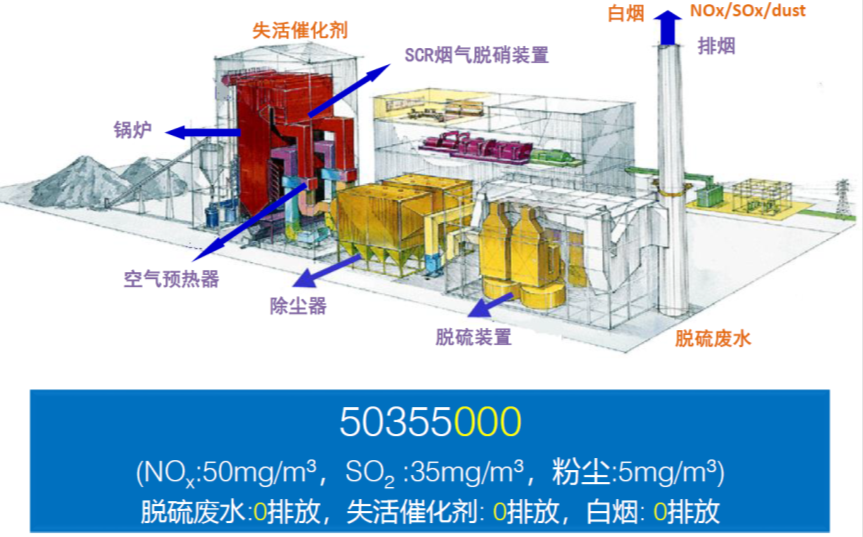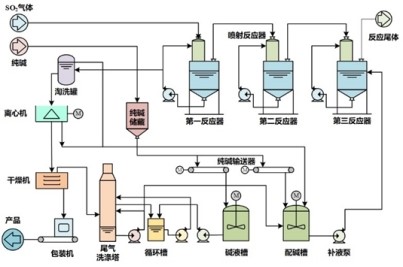Industrial Flue Gas Pollution Reduction and Resource Utilization Technology and Equipment
Applicating Company
Nanjing Gekof Institute of Environmental Protection Technology & Equipment Co., Ltd.
Technology Name
Industrial Flue Gas Pollution Reduction and Resource Utilization Technology and Equipment
Technical principle
The flue gas ultra-clean treatment system technology:based on all-dimensional and multi-scale numerical simulation, with experimental and engineering measurement as calibration, optimized integrated research and development model, the development of four key technologies of flue gas control, including process technology, key equipment, system integration and optimization, engineering design and project implementation, and the construction of three platforms of research and development, design and project management has carried out, combined with multiple core technologies such as precise and rapid control system for ammonia injection based on multi-model predictive control, the technology and equipment are highly consistent with computer simulation. The desulfurization efficiency can reach 99%, and the denitrification efficiency can reach 90% under the premise that the ammonia escape rate does not exceed the standard and the catalyst is not blocked, so as to realize the ultra-clean emission of SO2, NOx and dust.
The highly efficient resource utilization technology of SO2 in the flue gas: developed industrial flue gas desulfurization by-product preparation of sodium metabisulfite, sulfur and other resource utilization process, with the technological innovations such as gas scrubbing, high efficiency bag filter and modified ceramic tube filtration, a low resistance and high efficiency reactor was developed. Realize the deep and efficient pretreatment of flue gas from different sources and the effective matching of the system, formed a series of skid-mounted modular system equipment and intelligent response control system integration, also a new byproduct process of sodium metabisulfite based on industrial flue gas desulfurization was formed. An industrial demonstration plant for flue gas desulfurization with an annual output of 10,000 tons of sodium metabisulfite has been built, and the products are superior to the national product standards.
Scope of application
This technical achievement is applicable to the ultra-clean treatment of flue gas in power plant, as well as the treatment of multi-pollutants from non-electric industrial boilers/kilns such as heating, steel, cement, glass and hazardous waste disposal and treatment of multiple pollutants from thermal and chemical conversion of non-fossil fuel energy. The technology has been successfully applied to the 13,000MW units of 24 power plants in China, covering almost all the large thermal power plants in service (135-1000MW) in China, it has good adaptability to new projects and renovation projects. It can solve the problem that the power plant boiler meets the national pollution control requirements in different periods, large-scale application of flue gas treatment has also been successfully achieved in heating boilers, cement kilns, glass kilns and hazardous waste incineration.
Process flow and description
The flue gas ultra-clean system treatment technology optimizes the systems such as limestone-gypsum wet desulphurization, LNB+SNCR+SCR denitrification, fine dust containment, colored plume elimination and catalyst deactivation management and treatment through all-dimensional, multi-scale and system level numerical simulation and measurement.
The system is highly efficient and reliable, and can be highly Individual designed, constructed and operated according to the characteristics of different pollution sources and the treatment needs of SO2、NOx、and dust.

FIG. The flue gas ultra-clean system treatment technology
The highly efficient resource utilization technology of SO2 in the flue gas adopts low concentration of SO2 enrichment and conversion technology and a new nested three-stage reaction process to prepare sodium metabisulfite. By heating the activated carbon to produce high concentration of SO2, the volume concentration of SO2 in the flue gas is raised from less than 1‰ to 5%~15%, the content of O2 decreased from 7~8% to less than 1%, it solves the problems of large volume and high investment of by-product utilization equipment caused by low original concentration of SO2 in the flue gas, and the product is easy to be oxidized and of low quality caused by high O2 content.
A new nested three-stage reaction flue gas desulfurization process was adopted to produce sodium metabisulfite, through the optimization and regulation of key parameters in the process of absorption, reaction, crystallization, separation and drying, the formation of non-target products is effectively inhibited, and it can adapt to the fluctuation of flue gas flow and composition under different load conditions, the system is characterized by low resistance and high efficiency, the sodium metabisulfite content was higher than 97.5% (which is better than the requirement of 96.5% for excellent products in HG/T2826-2008 Industrial Sodium metabisulfite), the problem of low resource level of desulfurization by-products was solved, and the high value of SO2 utilization of industrial flue gas was realized.

FIG. The highly efficient resource utilization technology of SO2 in the flue gas
Promotion prospects
The Report
of the 19th National Congress of the Communist Party of China (CPC) put forward
the general characteristics of national economic development in the new era
from high-speed growth to high-quality development.
Promoting
energy conservation, emission reduction and green development has become a
major issue in the new development stage, the development of the times puts
forward higher requirements for the flue gas control work in the new period.
China has
successively issued a series of ecological environmental protection regulations
and policies, such as the Comprehensive Treatment Plan for Air Pollution from
Industrial furnaces (MEE [2019]No.56) and the Opinions on Promoting and
Implementing Ultra-low Emissions from the Steel Industry (MEE [2019]No.35),
which promote the release of environmental protection industry demand and
industrial development.
According
to the China Association of Environmental Protection Industry (CAEPI), the air
pollution treatment market space of major non-electricity industries, including
steel, cement, plate glass and ceramics, could reach up to 300 billion yuan,
showing a broad market prospect.
China is
now facing the transition from environmental protection demand mainly with
pollution reduction to the new demand of resources and environmental
protection. However, the conventional flue gas treatment technologies focus on
the removal of pollutants and ignores the utilization of resources. In the
field of energy consumption alone, the loss of sulfur due to the emission of SO2 from flue gas amounts to about 40 million tons per year (translated data), The
current conventional desulfurization process has an annual output of more than
80 million tons of desulfurized gypsum, the proportion of effective utilization
of desulfurized gypsum is less than half. The resource utilization of pollutants, especially
the high value utilization, is seriously insufficient. Taking sulfur as an example, China's annual imports
are about 12 million tons, and its dependence on foreign imports is 60%. There is a huge demand and gap, a prominent contradiction between supply
and demand, and the strategic security situation is critical. It is the trend of pollution control in the future to recycle and utilize
sulfur dioxide and other pollutants in waste gas, it is also an important way
to solve the high cost of desulfurization and other pollution control and
secondary pollution of by-products.
This technical achievement
is applicable to the ultra-clean treatment of flue gas in power plant, as well
as the treatment of multi-pollutants from non-electric industrial boilers/kilns
such as heating, steel, cement, glass and hazardous waste disposal and treatment of multiple pollutants from
thermal and chemical conversion of non-fossil fuel energy, in particular, SO2 and other pollutants can be converted into high value-added products such as
sodium metabisulfite, which is highly consistent with the concept of circular
economy and resource recycling. It has a great application of space in the
upgrading of traditional desulfurization facilities, as well as in the waste
gas treatment field of petroleum refining, chemical industry and other
industries, and a broad prospect for promotion.
 Scan and Follow Us
Scan and Follow Us

